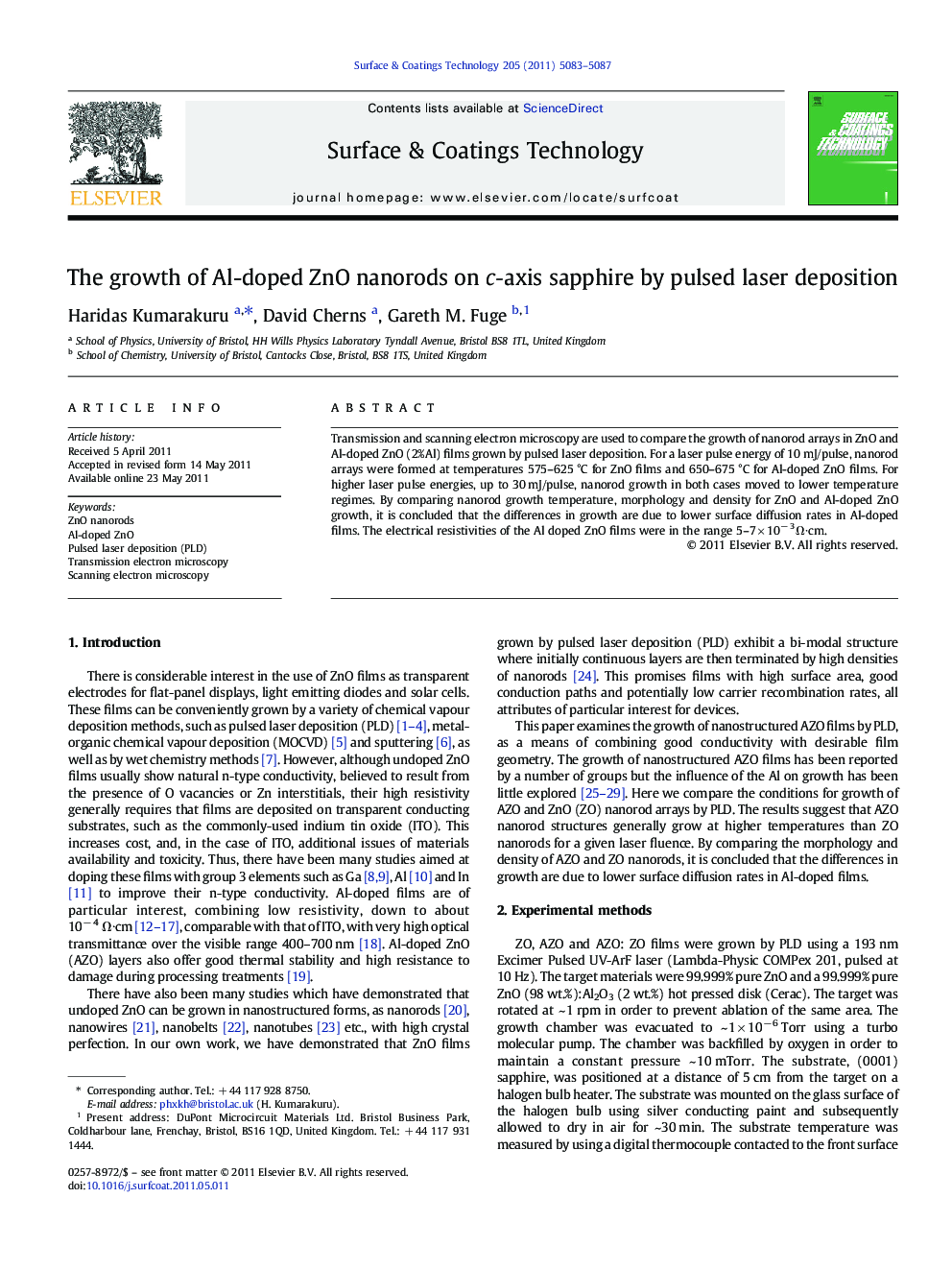| Article ID | Journal | Published Year | Pages | File Type |
|---|---|---|---|---|
| 1658555 | Surface and Coatings Technology | 2011 | 5 Pages |
Transmission and scanning electron microscopy are used to compare the growth of nanorod arrays in ZnO and Al-doped ZnO (2%Al) films grown by pulsed laser deposition. For a laser pulse energy of 10 mJ/pulse, nanorod arrays were formed at temperatures 575–625 °C for ZnO films and 650–675 °C for Al-doped ZnO films. For higher laser pulse energies, up to 30 mJ/pulse, nanorod growth in both cases moved to lower temperature regimes. By comparing nanorod growth temperature, morphology and density for ZnO and Al-doped ZnO growth, it is concluded that the differences in growth are due to lower surface diffusion rates in Al-doped films. The electrical resistivities of the Al doped ZnO films were in the range 5–7 × 10− 3 Ω∙cm.
► Pure ZnO and Al-doped ZnO (AZO) nanorods can be grown by pulsed laser deposition. ► AZO nanorods grow at a higher temperature compared to ZnO at a given laser energy. ► For higher laser energy, growth in both cases moved into lower temperature regimes. ► The differences can be explained by lower surface diffusion rates in AZO. ► The electrical resistivities of AZO films were in the range 5–7 × 10− 3 Ω∙cm.
